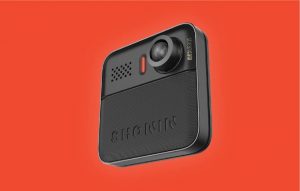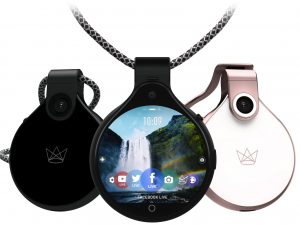In fifty years or sooner (fifty is just a wide guess) we will be wearing cameras 24/7. Beginnings of that are already observable with GoPros and similar cameras in niche applications (sports, festivals…) or body cams worn by the police. Furthermore, a few new wearable cameras came out recently. Shonin, a camera you clip to your clothes, started August 1st on Kickstarter. FrontRow was announced aon 13th of August and is a round camera you hang around your neck. Whereas Shonin is easily identifiable as a camera, FrontRow has a necklace like design and blends very inconspicuously with your clothes.


However, all day cameras have been along for quite some time (see Memoto or Panasonic, for instance) but have only reached the mainstream in the aforementioned niches. There are four reasons why all day cameras are still used only in niches.
- Expensive (relative to the smartphone): The newly introduced FrontRow, for example, costs $399.00 That is a lot, especially as you still will want to own a smartphone.
- Unfashionable looks: Even the quite unintrusive looking FrontRow looks to “gadgety” to be worn all day. People’s looks are precious to them (consider how much time and money flows into outfits) and adding tech to that will only work if it is considered “fashionable” (whatever that might be).
- Privacy: In a recent survey about Google Home I found that (German) people’s main aversion against it was rooted in privacy concerns (Google Home was considered a surveillance device). Furthermore, reactions to Google Glass painted a similar picture when it was introduced. Although with Snap’s Spectacles the reaction was not hostile in regards to privacy, I still believe that the thought of being surveilled 24/7 by people with no public authority is threatening.
- No use case.
Well, not exactly, but I have the impression that for most people a worn camera means recording everything throughout the day. And I further have the feeling that people do not see a need for that (except in special scenarios such as parents with small children). However, there are a few more applications, which admittedly are onlya way of reducing friction. One example are image-based tasks. With image-based tasks I refer to tasks where we use images as the initiation of a process. Consider image-based todos. Instead of writing down that you have to clean the kitchen you take a picture of it. An AI system could further extract meaning from that picture and translate it into a written task or add a description. Another example is “ discovery buying”. When you see an object you desire you could capture it and through image recognition inquiry more about that product. Similar to Amazon’s Dash (the button you use to buy an item specified to that product) or Amazon’s one click-buying image-bused buying could drastically remove friction.
Besides that, wearing a camera 24/7 means that you obtain a digital copy of your life. The consequences of this are intriguing. If everything you see is recorded and obtainable at any time, what would you have to remember? Could a 24/7 live stream of your life be of interest or use to anybody? How could you use it as evidence at court?
However, although all these applications have some value, I doubt that they will be enough to lead to a mainstream adaption of wearable camers. I think that they will diffuse in niche applications until they get integrated into a bigger system resulting in a highly useful application such as AR. As in input device for AR they would capture the outside world and be the input for the overlayed visuals from the AR system. Thus, wearable cameras must not be considered a product but rather a part of a wider “transformation”, such as, for example, Ubiquitous Learning (as one part of AR). I have defined Ubiquitous Learning here as an all day learning environment supported by technology (such as wearables) which goes beyond book knowledge into the improvement of everyday activities such as having a conversation. Here, a camera would capture the other person’s reactions and give your recommendations on how to adapt your speaking, if, for example, it sees you annoying the other person.